Strawberries (garden strawberries) reproduce very easily. The most common way to obtain planting material is to grow young plants from vegetative shoots - tendrils. Seedlings are also obtained by dividing the bush.
Strawberry propagation by mustache
Strawberry shoots are called mustaches, on which rosettes of leaves develop, and later roots appear. Fixing themselves in the ground, they form a new young plant.
Biological characteristics of the mustache
Up to 5-7 rosettes can form on one garland over the summer, 12-16 in the southern regions. One bush produces 10-15 vegetative shoots with rosettes.
Whiskers begin to form when there is more than 12 hours of daylight and temperatures above 15 °C. The strongest rosettes are formed in the first year of cultivation. Over time, the whiskers become smaller; by the end of the plantation's life, the strawberries almost do not form vegetative shoots.
Benefits of whisker propagation
Propagation of strawberries by mustache is preferable to seed propagation.
- You can quickly get a lot of young plants.
- The mustache retains all the varietal characteristics of the mother bush.
- High survival rate of sockets.
- Ease and accessibility of reproduction.
The main disadvantage of this method is that it is impossible to simultaneously obtain a high yield of berries and good strong mustache.
Getting a mustache
To propagate strawberries, take July tendrils. They are the strongest, well-formed, and before winter they will have time to form a powerful root system and lay many flower buds. Up to 15 tendrils are obtained from one plant. No more than 5 shoots with 3 rosettes on each are left on the mother bush. The remaining mustaches and shoots are removed. The mustaches of the first order are the largest, the second and third are slightly smaller, but are also suitable for reproduction. The remaining tendrils are small and it is not advisable to leave them, they only weaken the plant.
When propagating strawberries with tendrils, they are taken only from bushes with a large number of horns. At the plot, plants are selected according to certain criteria (taste, berry size, yield, etc.). All emerging flower stalks are removed from them, then the strawberries will switch only to bean formation. Fruiting and reproduction are incompatible processes; if you combine them, there will be neither a high yield nor a good mustache.In the selected uterine bushes, the mustache is allowed to grow freely, but as soon as 3 rosettes are formed, the garland is cut off.
When roots appear on the tendrils, they are sprinkled with damp soil without separating them from the mother plant. Water in hot, dry weather 2-3 times a week; in rainy weather, loosen as the soil compacts. It is not recommended to separate the rosettes from the bush ahead of time, since each previous horn feeds the next one with its roots, and the entire garland is strengthened by the roots of the mother plant.
Sometimes the mustache is rooted directly into nutrient pots, which are slightly buried in the ground. This method of obtaining seedlings has an advantage, since young strawberries are planted with a clod of soil and the seedlings take root much better.
2 weeks after picking the berries (2-2.5 months after the start of growth), the mustache is already fully formed and has a good root system. For planting, select rosettes with 4-5 well-developed leaves, a large heart and roots at least 7 cm long. They are separated from the mother plant and, together with a lump of earth, planted in a permanent place.
Obtaining horns from strawberries grown using mulch
If the bed with mother bushes is covered with mulch, through which the roots of the horns cannot break through, then the mustaches dive in the phase of 3 leaves and root primordia at the bottom of the horn. Such rosettes require light soil for rooting. For them, prepare a mixture consisting of peat, garden soil and sand in a ratio of 2:1:1.
Planted compactly: 1 m2 place 100-130 whiskers. The depth of the furrows is no more than 2 cm. The horns are shaded with mulching material and watered periodically. After the roots grow, the seedlings are planted in a permanent place.On poor soil, to obtain a high yield in the first year, strawberries are planted compactly; on fertile soil, they must be planted immediately according to the scheme.
It should be noted that this method of propagation is of little use in a garden plot due to its labor intensity and the need to allocate a separate area for seedlings. It’s easier to remove the mulch from the plot while the strawberries are growing.
Rooting a mustache in a permanent place without transplanting
Any transplant weakens the plant and leads to damage to the roots, even if only slightly. After it, the whiskers take root in the new place for some time, some of them die. The advantages of rooting immediately in a permanent place are as follows.
- The roots penetrate deeper into the ground than those of seedlings.
- Plants are able to extract water from deep soil layers.
- Strawberries become more resistant to drought.
- Rooting the mustache immediately in a permanent place gives an increase in yield.
This method of propagating strawberries is very suitable for southern regions, where there is often drought in the summer.
To root the mustache immediately in a permanent place, shoots with rosettes without roots are directed to the desired place, where they are allowed to take root.
There are 2 ways to reproduce using this method:
- creating a new row;
- formation of a colony of rosettes around the mother plant.
Create a new row next to the existing strawberry row. This method of propagation is more convenient to use when planting plants in a single row. Growing vegetative shoots (no more than 4-5 from one plant) are directed in the desired direction or on both sides of the uterine bushes. The rest of the mustache is removed.
Rosettes of the second order are rooted, since the first order of the mustache is too close to the mother bush. So that the first mustache on the garland does not interfere with rooting, their roots or foliage are cut off.When the young bushes gain strength, they are separated from the mother plant, cutting off the shoot, and cared for like all other young bushes.
Strawberry colony. The method is used when you need to get a lot of good quality mustache, but there is no space for a garden bed on the site. Then several varietal plants are planted between bushes or under the crown of trees and all summer they give the mustache the opportunity to grow in all directions (but no more than 5 per garland).
In mid-August, weak plants are discarded and the best ones are left. The distance between the remaining tendrils and the mother bush should be 25-30 cm. Such a plot, like a bed, is kept clean, constantly weeded, watered and carefully loosened, trying not to damage the young rosettes. As a result, by autumn a varietal colony of strawberries appears on very strong roots, which produces high yields in subsequent years.
Strawberry propagation by dividing the bush
This propagation method is used when strawberries produce few vegetative shoots or they do not meet the requirements for them (sick, small, etc.). Strawberries are propagated by dividing the bushes and if the crop falls too much after winter. Then the young strawberries are left to bear fruit, and the mature plants are divided into horns.
Only 3-year-old bushes are suitable for propagation by horns. The young ones have too few horns, the old ones are unsuitable for reproduction, since they develop a small woody stem, the heart is above the ground. Such plants, even when separated, continue to form a stem, that is, the same old bush develops, which will no longer produce good harvests.
Choose a powerful 3-year-old strawberry, whose heart is at ground level, and divide it into horns.From one bush, depending on the variety, there can be from 6 to 20 horns. The resulting rosettes are planted in a permanent place in the first ten days of August. New young plants will form from them by the end of September.
Reproduction by this method is not widespread; it is used only in cases of urgent need.
Planting strawberries in a permanent place
Strong rooted mustaches or horns obtained by dividing the bush are planted at the end of July immediately in a permanent place where they will grow for 4 years. The soil for strawberries must be prepared 1-2 months in advance.
It is better not to plant young plants after potatoes and tomatoes. Strawberries do not tolerate their root secretions, and the mustache will be severely suppressed. The longer the nightshades grew in a given place, the more secretions they left, and the more the strawberries are inhibited. If the predecessor was in the ground for a short time (for example, early potatoes), then it left less root exudates, and young bushes will not react to them so strongly. If there is no other option and you have to plant strawberries after nightshades, then you need to remember that the plants will gradually straighten out, but the first harvest will be smaller.
The second undesirable predecessor is pumpkin crops. They do not have a harmful effect on strawberries, but they remove almost all the nitrogen from the soil, which is so necessary for the mustache to grow and prepare for winter. When planting mustaches after pumpkin ones, increased doses of organic fertilizers are added to the soil: on heavy loams and sandy soils, 5 buckets/m2, on medium and light loams - 3 buckets/m2.
Errors when propagating strawberries
The main mistakes are as follows.
- The whiskers were separated from the mother bush too early. Rosettes for independent growth must form a good root system.When the shoots are pruned early, they begin to lag in growth, do not tolerate winter well, and there are many lunges among them. The first tendrils take root in early June, with a warm spring at the end of May. They should be separated from an adult plant no earlier than after 60-70 days.
- Uncontrolled growth of mustache. By autumn, with this cultivation, up to 30 small underdeveloped rosettes are formed. Uncontrolled whisker formation significantly weakens the uterine bush and prevents the full development of the whiskers. As a result, there is no good planting material, and the yield of the mother plant for the next year is reduced to nothing.
- The mustache is temporarily buried and only later planted in a permanent place (this especially applies to purchased planting material). Frequent replanting severely damages the roots, a lot of time passes before the strawberries grow them again, the bushes weaken, take root worse, and there are many attacks the next year.
- Planting strawberries in unprepared soil. Even good planting material does not develop well in such conditions.
Propagating strawberries is simple, but it is important to do it correctly, then the seedlings will form good bushes, which, with proper care, will give a high yield.
Other useful articles on growing strawberries:
- Strawberry care. The article describes in detail how to care for a strawberry plantation from early spring to late autumn.
- Strawberry pests. What pests can threaten your plantation and how to effectively combat them.
- Strawberry diseases. Treatment of plants with chemicals and folk remedies.
- Growing strawberries from seeds. Is it worth it for ordinary summer residents to do this?
- The best varieties of strawberries with photos and descriptions. A selection of the newest, most productive and promising varieties.
- Growing strawberries in a greenhouse. Growing technology and all the pros and cons of this matter.
- Planting strawberries in open ground. Are you going to tackle strawberries? Then this is the very first article you need to read.
- Features of caring for large-fruited strawberries

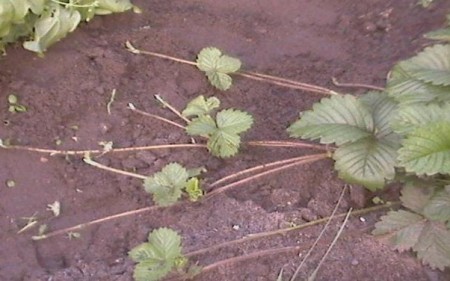
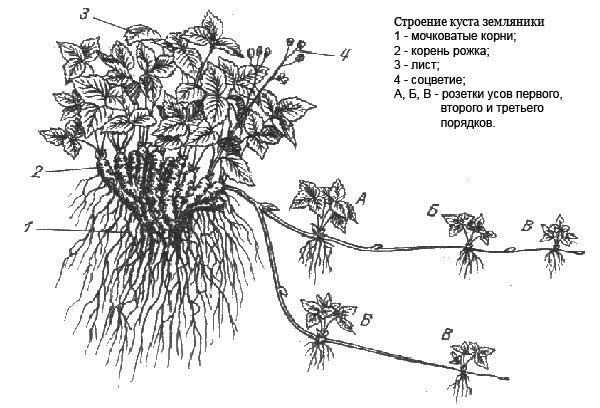
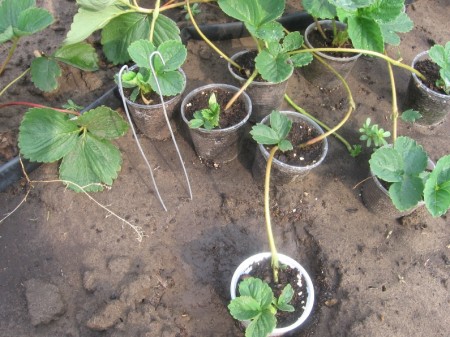
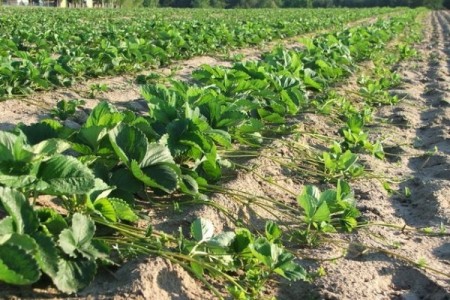
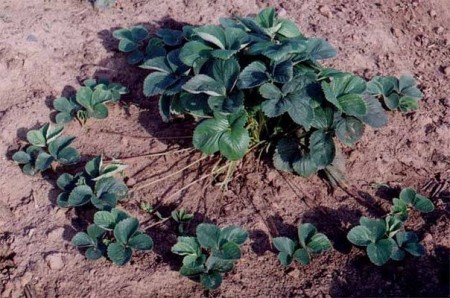
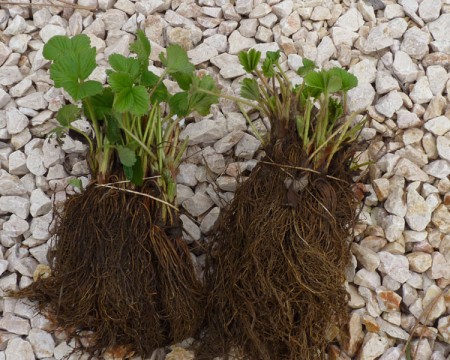


 (4 ratings, average: 3,75 out of 5)
(4 ratings, average: 3,75 out of 5) CUCUMBERS NEVER GET SICK, I'VE BEEN USING ONLY THIS FOR 40 YEARS! I SHARE A SECRET WITH YOU, CUCUMBERS ARE LIKE THE PICTURE!
CUCUMBERS NEVER GET SICK, I'VE BEEN USING ONLY THIS FOR 40 YEARS! I SHARE A SECRET WITH YOU, CUCUMBERS ARE LIKE THE PICTURE! You can dig a bucket of potatoes from each bush. Do you think these are fairy tales? Watch the video
You can dig a bucket of potatoes from each bush. Do you think these are fairy tales? Watch the video
 How our fellow gardeners work in Korea. There is a lot to learn and just fun to watch.
How our fellow gardeners work in Korea. There is a lot to learn and just fun to watch. Eye trainer. The author claims that with daily viewing, vision is restored. They don't charge money for views.
Eye trainer. The author claims that with daily viewing, vision is restored. They don't charge money for views. A 3-ingredient cake recipe in 30 minutes is better than Napoleon. Simple and very tasty.
A 3-ingredient cake recipe in 30 minutes is better than Napoleon. Simple and very tasty. Therapeutic exercises for cervical osteochondrosis. A complete set of exercises.
Therapeutic exercises for cervical osteochondrosis. A complete set of exercises. Which indoor plants match your zodiac sign?
Which indoor plants match your zodiac sign? What about them? Excursion to German dachas.
What about them? Excursion to German dachas.